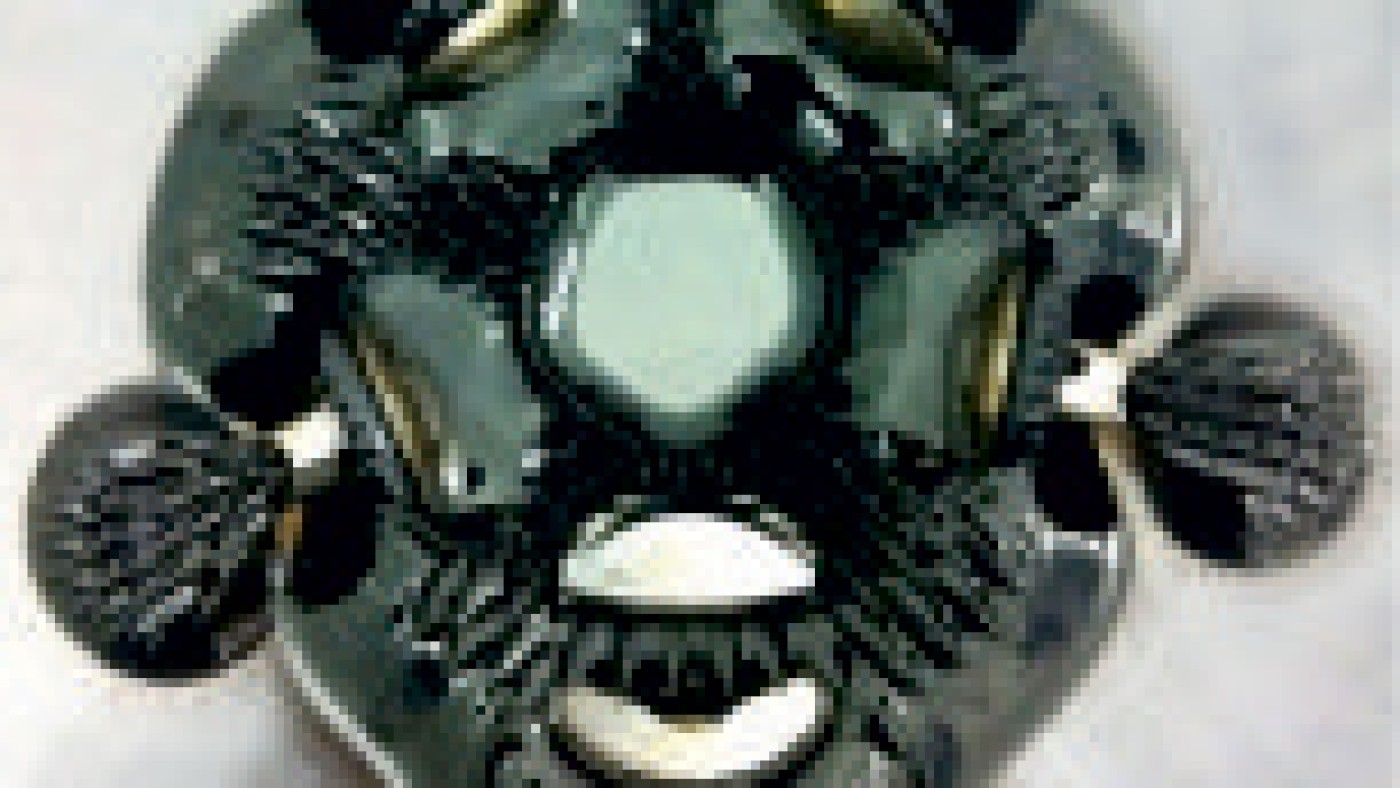The Art of Magnetism - Temporary Ornaments
from 14. April 2018
Interdisciplinary art & science intervention in Hall 1, Mineral collection of the NHM Vienna
Interdisciplinary art
& science intervention
in Hall 1, Mineral collection of the NHM Vienna
With Bogomir Doringer & Bernd Oppl, Tarron Ruiz-Avila, Milan Mladenovic & Renate Quehenberger
Dr. Sofia Kantorovich (Uni Wien, Computational Physics Group, Dipolar Soft Matter)
Ferrofluids are stable typically kerosene-based fluids with magnetic nano-particles (iron, cobalt, nickel, hematite) within. These particles react to an applied magnetic field and form various structures. As a result, magnetic fields can be used to control ferrofluids.
This art-science intervention both explains the involved cutting-edge research and provides visual insights through aesthetic perception of those magic phenomena in a playful way.
The Video entitled „ Substanzaufnahme“ (substance admission) is a collaborative piece by the Netherlands-based Serbian artist Bogomir Doringer and the Tyrolian artist Bernd Oppl. In this video work, two lines of research are coming together. Mr. Oppl has recently investigated architectural structures represented on a small scale as film set models. In his models, surreal transformations are taking place. This time the designed room welcomes an alien-looking sculptural form that is one of possible structures created as result of research on which artist Bogomir Doringer has been working since 2010. His research was to use military material ferrofluid as an artistic material and the creation of a science fiction presence in reality, suggesting that fiction is a temporary state.
Together with Australian born artist Tarron Ruiz Avila, Doringer engaged in the production of temporary ornaments that are created as the reaction between ferrofluid and magnets. These forms have been fixed in an epoxy material, turning into an abstract-looking object resembling the appearance of solid minerals.
The media-artist and awardee of the Kunsthalle Wien 2012, Milan Mladenovich and the art researcher Renate Quehenberger, who is usually dealing with visualizations of higher dimensional spaces, are presenting an Hommage to Michael Faraday (1791-1867) the British scientist who discovered electromagnetic induction. Iron filings in a glas-box are reacting on the magnetic field created by electro-magnets just like in his very first experiments: spiky hemispheres are popping up on different positions creating an irregular pattern of spiky circles generated by the influx of magnetic force.
Supported by: Rusa GmbH, WissKomm, The Art of Magnetism (FWF) and ETN COLLDENSE
in Hall 1, Mineral collection of the NHM Vienna
With Bogomir Doringer & Bernd Oppl, Tarron Ruiz-Avila, Milan Mladenovic & Renate Quehenberger
Dr. Sofia Kantorovich (Uni Wien, Computational Physics Group, Dipolar Soft Matter)
Ferrofluids are stable typically kerosene-based fluids with magnetic nano-particles (iron, cobalt, nickel, hematite) within. These particles react to an applied magnetic field and form various structures. As a result, magnetic fields can be used to control ferrofluids.
This art-science intervention both explains the involved cutting-edge research and provides visual insights through aesthetic perception of those magic phenomena in a playful way.
The Video entitled „ Substanzaufnahme“ (substance admission) is a collaborative piece by the Netherlands-based Serbian artist Bogomir Doringer and the Tyrolian artist Bernd Oppl. In this video work, two lines of research are coming together. Mr. Oppl has recently investigated architectural structures represented on a small scale as film set models. In his models, surreal transformations are taking place. This time the designed room welcomes an alien-looking sculptural form that is one of possible structures created as result of research on which artist Bogomir Doringer has been working since 2010. His research was to use military material ferrofluid as an artistic material and the creation of a science fiction presence in reality, suggesting that fiction is a temporary state.
Together with Australian born artist Tarron Ruiz Avila, Doringer engaged in the production of temporary ornaments that are created as the reaction between ferrofluid and magnets. These forms have been fixed in an epoxy material, turning into an abstract-looking object resembling the appearance of solid minerals.
The media-artist and awardee of the Kunsthalle Wien 2012, Milan Mladenovich and the art researcher Renate Quehenberger, who is usually dealing with visualizations of higher dimensional spaces, are presenting an Hommage to Michael Faraday (1791-1867) the British scientist who discovered electromagnetic induction. Iron filings in a glas-box are reacting on the magnetic field created by electro-magnets just like in his very first experiments: spiky hemispheres are popping up on different positions creating an irregular pattern of spiky circles generated by the influx of magnetic force.
Supported by: Rusa GmbH, WissKomm, The Art of Magnetism (FWF) and ETN COLLDENSE


